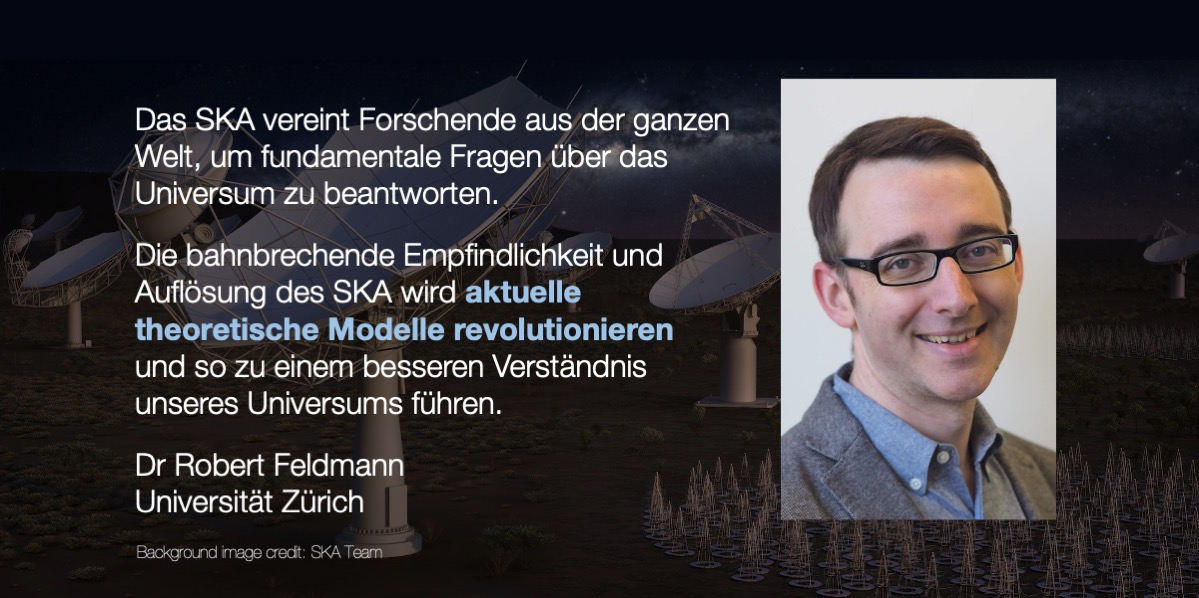AstroSignals
DATA & SCIENCE FOR THE NEW GENERATION OF VERY LARGE RADIO-ASTRONOMY FACILITIES
NEW RADIO-TELESCOPES WILL BRING US A BIG STEP FORWARD IN THE MOST FUNDAMENTAL QUESTIONS OF COSMOLOGY. AND EVEN ONE OF THE GREATEST MYSTERIES OF HUMANKIND:
Are we alone in the Universe?
Background image credit: SKA Team
News
2/12/2021
Kick-off meeting at FHNW Windisch.
3-4/2/2021
Statemets by Swiss scientists on the occasion of the newly constituted Square Kilometer Array Organization #SKAO
The AstroSignals project
A Swiss initiative preparing for upcoming research opportunities in the field of radio-astronomy. The project team participates in, and contributes to, the new research infrastructures by working on:
![]()
➤ Synergies in CH and beyond
![]()
➤ Research with SKA precursors
![]()
➤ New data exploitation methods
![]()
➤ Signal data processing
The activities are carried out with regard to several new radio-astronomy facilities currently in development. The most ambitious one is the Square Kilometre Array. The SKA is an international effort to build the world’s largest radio telescope. It is not a single telescope, but a collection of telescopes, called an array, to be spread over long distances. It will be constructed in Australia and South Africa with a later expansion in both countries and into other African countries. New generation radio-telescopes rely on complex infrastructures:
100s of interconnected dishes and receivers
![]()
A supercomputer-scale computing facility
![]()
Several data centres around the globe
We expect huge amounts of data to come from the SKA and its precursor radio telescopes MeerKat, ASKAP and HIRAX (Switzerland is already involved in HIRAX). Once the radio signals have been received and processed, data will be sent to one of the dedicated data centers around the globe to be stored and made available for scientific investigation. This enormous undertaking generates many computational challenges in terms of signal processing, data science and high performance computing techniques.
AstroSignals’ research activities are a well invested effort to put scientists in Switzerland and beyond in a position to access, and contribute to, the most encompassing radio-astronomy facilities of the future once data arrive. Being prepared and ready to operate at the cutting edge of science and technology is key.
The following institutions are involved in AstroSignals:
International experts contribute to AstroSignals and provide access to SKA precursor telescopes:
- Paul Hurley, Centre for Research in Mathematics, Western Sidney University, Australia
- Oleg Smirnov (MeerKAT), Centre for Radio Astronomy Techniques & Tech, Rhodes University, South Africa
- Baerbel Koribalski (Wallaby/ASKAP), CSIRO Astronomy & Space Science, Australia Telescope National Facility, Australia
- Kavilan Moodley (HIRAX), UKZN, South Africa
- Yves Wiaux, Biomedical and Astronomical Signal Processing (BASP), Heriot-Watt-University, Great Britain and Northern Ireland
- Marc Sargent, Sussex University, Great Britain and Northern Ireland













